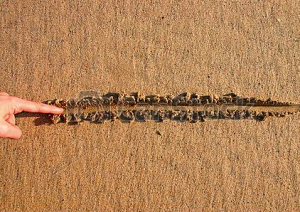Spiritual Bypassing and our emotional jar – Part 1: A response to Heather Plett
 I’m fortunate enough to be a participant in a Holding Space Facilitation Course through the Lighthouse Fund, under the supervision of the organization’s co-founder, Valerie Shayne. The group meets on a weekly basis, providing a support system of sorts. We have a list of recommended readings which we work through and discuss, enriching the overall experience. Recently we had a session on Spiritual Bypassing, which inspired me to talk about the metaphorical “Emotional Jar” – a helpful tool that I use in my day-to-day life.
I’m fortunate enough to be a participant in a Holding Space Facilitation Course through the Lighthouse Fund, under the supervision of the organization’s co-founder, Valerie Shayne. The group meets on a weekly basis, providing a support system of sorts. We have a list of recommended readings which we work through and discuss, enriching the overall experience. Recently we had a session on Spiritual Bypassing, which inspired me to talk about the metaphorical “Emotional Jar” – a helpful tool that I use in my day-to-day life.
The Emotional Jar can be visualized as a physical container that is filled with one’s emotional and psychological strengths. When a trigger happens in life, you are always faced with a choice. You can either work through the experience systematically, facing the turmoil experienced, and reaching a space of inner peace. Or, alternatively, you can bypass it – essentially “sidestepping” any unresolved emotional/psychological wounds, protecting yourself from any emotional discomfort that the pain evokes, without finding inner peace or closure. This is called “Spiritual Bypassing.” With each bypass, over time, we pour some of the content out of our emotional jar and eventually risk depleting it entirely. Our depleted emotional jars are exhibited in our daily lives as coping mechanisms: burn-out, illness, despair, addictions, or even poor eating habits. This unidentified response will present elsewhere! There are many reasons that we choose the “spiritual bypassing” option and that’s okay in that moment. There are times in our lives when being able to cope with emotional challenges simply falls outside of our capacity. What does tend to happen is that we are continually faced with similar challenges until we face the lesson that we need to learn.
Sometimes a good starting point is to deal with the smaller issues, or with issues that have a common thread which can work quite well. It allows us to understand the experience from a broader perspective, and uncover viable solutions within our own internal/external resources. Once solutions bear fruit, this fills our emotional jar to be able to cope with other tasks on a deeper level.
We can literally choose to deal with an issue on a certain day and time if that is beneficial – tailoring it so that the challenge does not remove any more nourishment from our emotional jar lessening the toll it takes on our day to day lives.








 I completely fell in love with the experience.
I completely fell in love with the experience.